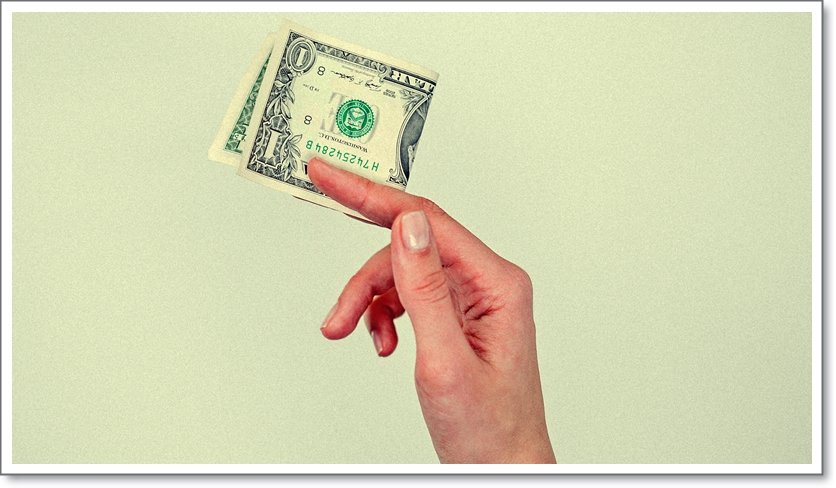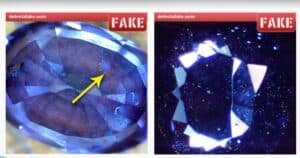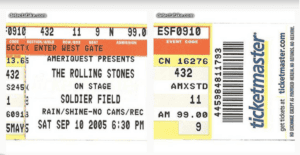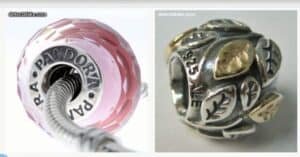how to detect a fake money: Counterfeit currency is a serious issue, with an estimated $70 million in fake bills circulating in the United States, according to the U.S. Department of Treasury. This not only impacts the economy but also poses legal risks for individuals who unknowingly use counterfeit money. It is crucial for everyone, not just financial institutions, to be able to identify fake money. This article provides a comprehensive guide on how to detect counterfeit bills using insights from law enforcement and the U.S. Department of Treasury.
Importance of Detecting Counterfeit Money
Using counterfeit money carries severe penalties. Both federal and state laws impose heavy fines and potential imprisonment of up to 20 years. With an increase in counterfeit incidents, particularly in late 2023 and early 2024, as reported by authorities in Wisconsin, vigilance is essential. Businesses in central Wisconsin have reported numerous cases involving fake $5, $20, and $100 bills.
How to Tell if Money is Real or Fake
Here are key techniques to spot counterfeit bills:
Color-Shifting Ink:
- Method: Hold the bill to the light and tilt it back and forth.
- What to Look For: Bills higher than $5 printed after 1996 should change color from green to copper or vice versa.
Raised Printing:
- Method: Rub your fingernail over the bill, especially over the shoulders and face of the portrait.
- What to Look For: Authentic bills have raised printing that feels distinct and textured.
Blurry Borders and Text:
- Method: Examine the edges and small text on the bill.
- What to Look For: Genuine bills feature sharp, clear micro-printing even under magnification. Blurry or smudged text is a red flag.
Red and Blue Threads:
- Method: Look closely at the bill’s fabric.
- What to Look For: Authentic bills have red and blue threads woven into the paper. Absence of these threads suggests a counterfeit.
Watermark:
- Method: Hold the bill to the light.
- What to Look For: Newer bills should have a watermark that matches the portrait. A mismatch or lack of a watermark indicates a fake.
Security Thread:
- Method: Hold the bill under a light.
- What to Look For: All denominations except $1 and $2 bills have a security thread that is visible when held to light and glows a specific color under UV light (e.g., yellow for $50 bills).
3-D Security Ribbon:
- Method: Available on new $100 bills, tilt the bill back and forth.
- What to Look For: The ribbon should show bells and “100” that move side-to-side as the bill is tilted.
How Do You Manually Detect Fake Money?
Manually detecting fake money involves several tactile and visual checks:
- Tactile Checks: Feel the texture of the bill. Genuine currency has a unique feel due to the high-quality paper and raised printing.
- Visual Checks: Use a magnifying glass to examine the micro-printing and other fine details. Real bills have very precise and clear printing.
- Light Checks: Hold the bill up to light to check for watermarks and security threads.
How to Find Fake Currency?
To find fake currency:
- Inspection Under Light: Use a bright light to check for watermarks and security threads.
- UV Light Test: Use a UV light to check for glowing security features.
- Magnifying Glass: Examine the bill closely for micro-printing and fine details.
How to Tell if a $1 Bill is Real?
The $1 bill lacks some of the more advanced security features found in higher denominations. However, it still has unique characteristics:
- Paper Quality: The texture and weight of the paper should be distinctive.
- Printing Quality: The details in the printing should be sharp and clear.
- Serial Numbers: Check that the serial numbers match and are evenly spaced and aligned.
How to Identify Fake Notes of $100
For the $100 bill, look for the following features:
- 3-D Security Ribbon: Should show bells and “100” that move side-to-side when tilted.
- Color-Shifting Ink: The bell in the inkwell should shift from copper to green.
- Watermark: Should match the portrait and be visible when held to light.
- Security Thread: Should glow pink under UV light.
How to Identify Fake Currency Notes
The general principles for identifying fake currency notes include:
- Comparing with a Genuine Bill: Always compare a suspect bill with one you know is genuine.
- Using Tools: Use a magnifying glass and UV light to check for detailed security features.
- Checking Multiple Features: Do not rely on just one feature; check several to confirm authenticity.
How to Check Fake Notes with Pen
Counterfeit detection pens are a quick tool:
- Mark the Bill: Draw a line on the suspect bill.
- Observe the Color: A dark mark indicates fake currency, while a light or clear mark indicates genuine currency. The pen reacts to starch in regular paper but not to the fiber used in genuine bills.
How to Detect Fake Money at Home
You can use several techniques to detect fake money at home:
- UV Light: A UV light can reveal hidden security features.
- Magnifying Glass: Examine the fine print and micro-lettering.
- Comparison: Compare the suspect bill with a known genuine one.
- Pen Test: Use a counterfeit detection pen to mark the bill.
What to Do If You Suspect Counterfeit Money
- Take Notes:
- Record details about who gave you
you the bill and the circumstances of the exchange. If possible, include descriptions of the person and any companions, as well as vehicle information.
Minimize Handling:
- Handle the suspected counterfeit bill as little as possible to preserve any forensic evidence.
Seek Verification:
- Take the bill to your local bank or police department for professional evaluation.
How to Tell if Money is Real or Fake
Spotting counterfeit money requires a combination of tactile and visual checks. Here’s how you can ensure the money you have is genuine:
Color-Shifting Ink:
- Method: Hold the bill up to a light source and tilt it back and forth.
- What to Look For: Genuine bills printed after 1996 should change color from green to copper or vice versa.
Raised Printing:
- Method: Run your fingernail over the bill, especially over the shoulders and face of the portrait.
- What to Look For: Authentic bills have raised printing that feels distinct and textured.
Blurry Borders and Text:
- Method: Examine the edges and small text on the bill.
- What to Look For: Genuine bills feature sharp, clear micro-printing even under magnification. Blurry or smudged text is a red flag.
Red and Blue Threads:
- Method: Look closely at the bill’s fabric.
- What to Look For: Authentic bills have red and blue threads woven into the paper. Absence of these threads suggests a counterfeit.
Watermark:
- Method: Hold the bill up to a light source.
- What to Look For: Newer bills should have a watermark that matches the portrait. A mismatch or lack of a watermark indicates a fake.
Security Thread:
- Method: Hold the bill under a light.
- What to Look For: All denominations except $1 and $2 bills have a security thread that is visible when held to light and glows a specific color under UV light (e.g., yellow for $50 bills).
3-D Security Ribbon:
- Method: Available on new $100 bills, tilt the bill back and forth.
- What to Look For: The ribbon should show bells and “100” that move side-to-side as the bill is tilted.
Resources
For further information, you can refer to the “Know Your Money” publication by the U.S. Department of Treasury, which provides detailed descriptions and visual aids to help identify counterfeit money.
Additionally, these instructional videos are valuable resources:
By being informed and vigilant, you can protect yourself and your business from the repercussions of counterfeit currency.
- Click to share on Facebook (Opens in new window)Facebook
- Click to share on WhatsApp (Opens in new window)WhatsApp
- Click to share on X (Opens in new window)X
- Click to share on Mail (Opens in new window)Mail
- Click to share on Pinterest (Opens in new window)Pinterest
- Click to share on Telegram (Opens in new window)Telegram
- Share using Native toolsShareCopied to clipboard
- Online Student Seva Portal (OSSP.IN) : Education & Career Updates
 by AABID AHMED
by AABID AHMED - Sarkari Tab: Complete information about government tabs in easy language
 by AABID AHMED
by AABID AHMED - How to detect fake Sapphire Gemestones | 4 Ways to Determine if a Sapphire is Real
 by AABID AHMED
by AABID AHMED - How to Spot fake Ticketmaster Event Tickets? How do you check if my Ticketmaster tickets are real?
 by AABID AHMED
by AABID AHMED - How to detect fake Pandora Beads and Charms | Identifying Authentic Pandora Products
 by AABID AHMED
by AABID AHMED





